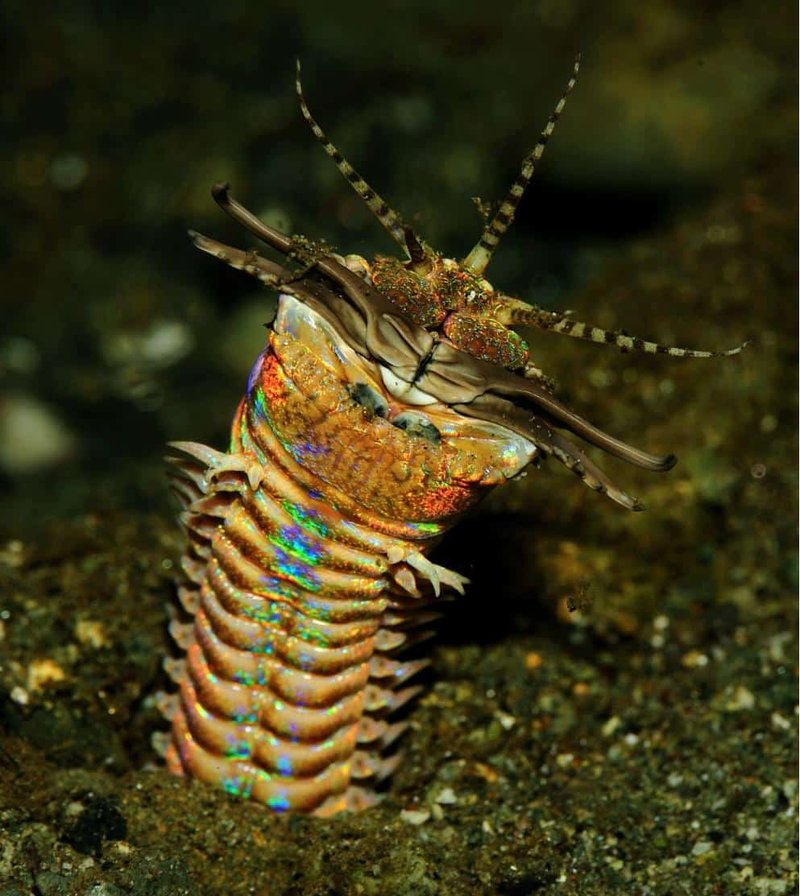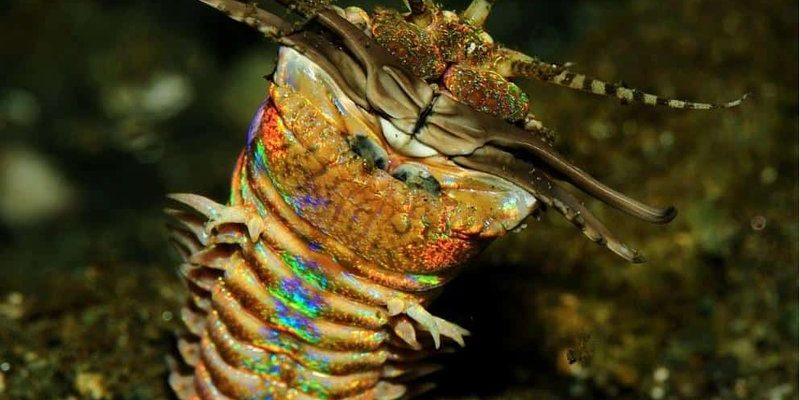
Bobbit worms, or *Eunice aphroditois*, are notorious for their fierce hunting skills and impressive lengths that can reach up to ten feet. They spend most of their lives buried in the sand or hidden among rocks, waiting patiently to ambush unsuspecting prey. This article will guide you through their life cycle, how they grow, and the molting process that makes their continued survival possible. So grab a cup of coffee, sit back, and let’s explore the remarkable world of these marine marvels!
What is Molting and Why is it Important?
You might be wondering, “What exactly is molting?” In simple terms, molting is the process of shedding an old skin or exoskeleton to allow for growth. For creatures like Bobbit worms, molting is crucial because it enables them to grow larger, adapt to their environment, and even heal from injuries.
For many marine animals, molting is a necessary step in their life cycle, much like how we outgrow our clothes. Picture a child who goes through phase after phase, needing new clothing as they grow taller. Similarly, Bobbit worms need to shed their old skin to accommodate their increasing size.
During the molting process, the worm secretes a layer of new skin beneath the old one. Once the new layer is ready, they’ll shed the old skin, sometimes even consuming it for nutrition. This regenerative ability might seem a bit gross, but for organisms in the wild, recycling nutrients is a smart survival tactic.
The Growth Stages of Bobbit Worms
Bobbit worms go through several growth stages, starting from a larval stage and eventually becoming the foot-long predators we know. Let’s break down these stages:
1. Larval Stage: After mating, female Bobbit worms release fertilized eggs into the water. They hatch as tiny larvae that float in the ocean currents. During this time, they look quite different from their adult forms.
2. Juvenile Stage: As the larvae settle on the ocean floor, they begin to develop into juvenile worms. This stage is critical as they start to form their iconic shape, developing their distinctive bristles and head structure.
3. Adult Stage: Upon reaching maturity, Bobbit worms can reach astonishing lengths. Their growth can be influenced by factors like food availability, water quality, and habitat. So, if you happen to spot one that’s a few feet long, it’s had a good life so far!
During these stages, they often molt as they grow, allowing them to maintain their health and vitality.
How Does Molting Work for Bobbit Worms?
The molting process for Bobbit worms is fascinating and can take several days. Here’s how it works, step by step:
1. Preparation: The worm prepares for molting by slowing down its feeding and moving less. It’s like hitting the pause button in life to get ready for a big change.
2. Secretion of New Skin: The worm begins to secrete a new epidermis beneath the old one. This new skin forms while they are still encased in their old skin.
3. Shedding the Old Skin: Once the new skin is ready, the worm will break free from the old layer. This part can be dramatic, as the old skin may create a mess in its burrow, but it’s a necessary step for growth.
4. Growth and Regeneration: After shedding, the worm might feel a bit vulnerable for a while as its new skin hardens. However, this is also a time for the worm to regenerate lost parts if needed, enabling it to thrive in its environment.
This intricate process helps maintain the health of Bobbit worms, ensuring they can thrive in their underwater world.
Factors Affecting Molting Frequency
You might find it interesting that not all Bobbit worms molt at the same rate. Several factors can influence how often they shed their skin:
1. Age: Younger worms tend to molt more frequently than older ones. As worms mature, their growth rate slows down, leading to fewer molts over time.
2. Food Availability: A worm that has access to more food will grow faster and may molt more often compared to one with limited resources. If a Bobbit worm has a steady stream of prey, it’s likely to shed its skin more regularly.
3. Environmental Conditions: Factors like water temperature, salinity, and habitat quality can also impact the frequency of molting. In ideal conditions, worms may thrive and grow quicker, requiring more regular molts.
Understanding these factors can provide insight into the health and growth patterns of Bobbit worms.
Why Molting Matters for Survival
The molting process is more than just a growth mechanism; it’s a vital survival strategy for Bobbit worms. Here’s why:
– Protection: When Bobbit worms molt, they get rid of parasites and other harmful organisms that might be clinging to their old skin. Think of it as a fresh start, much like how we feel after a good shower!
– Regeneration of Lost Parts: If a worm loses a section of its body during a scuffle, molting allows it to regenerate that part. That means a Bobbit worm can heal itself and continue thriving in its environment.
– Adaptation: As conditions change, molting helps the worm adapt to new challenges in its habitat. Whether it’s getting larger for a new food source or adjusting to water quality changes, molting enables these worms to stay resilient.
In a way, the molting process is like a reset button, giving Bobbit worms the opportunity to remain fit and functional in a constantly shifting world.
Bobbit worms may not be the cuddliest of ocean creatures, but their life cycle and the molting process are nothing short of fascinating. By shedding their skin and adapting to their environment, these remarkable worms excel in their underwater habitats.
Whether they are ambushing prey, regenerating lost bodily parts, or enjoying the benefits of a clean slate post-molt, Bobbit worms exemplify the resilience of marine life.
Next time you hear about these incredible creatures, remember their journey of growth and survival. After all, every inch of that ten-foot-long worm has a story to tell.

